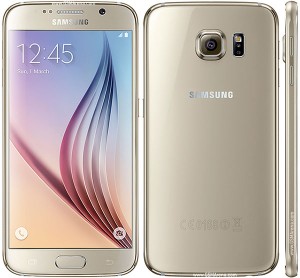 Chances are that if you read ebooks at all on an Android smartphone, you’re very likely doing it on a Samsung. And yet, according to an article in the Wall Street Journal, the Korean giant may be rethinking its game plan and cutting back on that market dominance after its founding father, Lee Kun-hee, was incapacitated by a heart attack. The issue is that, even though Samsung still stays ahead of Apple in the sheer number of smartphones sold, its mobile division’s operating-profit margins fell to 7 percent in 3Q2014, from 18 percent in the same quarter a year ago, with an overall profit slide for the mobile group of 42 percent during 2014.
Chances are that if you read ebooks at all on an Android smartphone, you’re very likely doing it on a Samsung. And yet, according to an article in the Wall Street Journal, the Korean giant may be rethinking its game plan and cutting back on that market dominance after its founding father, Lee Kun-hee, was incapacitated by a heart attack. The issue is that, even though Samsung still stays ahead of Apple in the sheer number of smartphones sold, its mobile division’s operating-profit margins fell to 7 percent in 3Q2014, from 18 percent in the same quarter a year ago, with an overall profit slide for the mobile group of 42 percent during 2014.
The WSJ described 2014 as “a disastrous year for Samsung Electronics, as sales of its latest Galaxy S smartphone fell far below expectations after three years of blockbuster revenues for earlier versions.” The same report also instances competition from Chinese rivals like Huawei as one of the main competitive threats to Samsung’s market dominance. It doesn’t need much imagination to see other initiatives targeting the future growth from developing markets, like the Android One, as a major competitive challenge.
To my mind, the takeaway from this is that the Android ecosystem has now grown too big and too diverse for a single manufacturer to dominate it unchallenged, or for a single device or series of devices to lock in market share. As the WSJ columnist Jonathan Cheng writes, “if the Galaxy S6 doesn’t work, what else do they have? There is only so much you can do with hardware.” Screen size is no longer that much of a differentiator with both a bigger iPhone and other large size Android competitors in the market. And Samsung’s efforts to push OS alternatives like Tizen have not borne much fruit. So maybe it’s time to look elsewhere for future smartphone ereading options.


































I know that I’ll be looking elsewhere if I need to get a new smartphone within the next year. Samsung dropped all the great features from the Galaxy S5 (removable battery, micro SD slot, water resistant). At least the US carriers are finally carrying more than just the version with the least amount amount of internal storage on it. Unfortunately, going from 32 GB to 128 GB appears to cost about $180, compared to $80-$100 for a 128GB micro SDXC card, so you need to know in advance how much space you’ll be using, and be prepared to pay Samsung and your carrier a premium to get it.